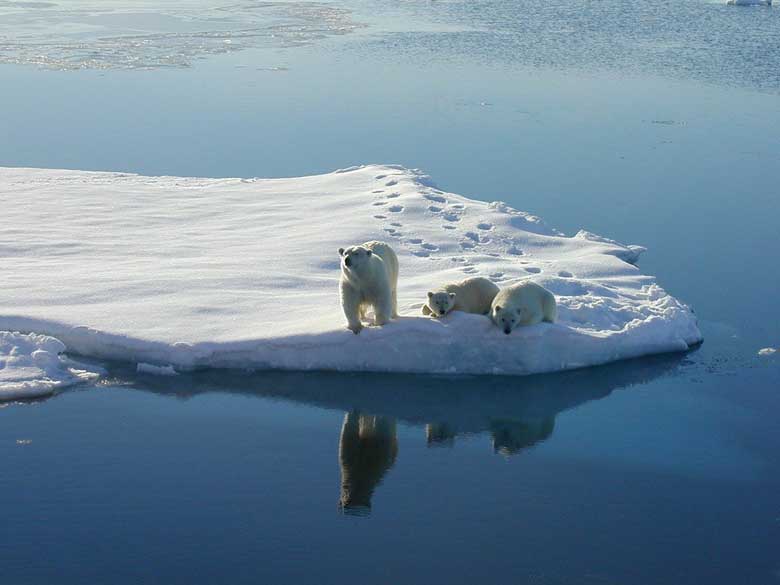Each month the National Snow & Ice Data Centre (NSIDC) issues an updated #Arctic Sea Ice update, and this week the January 2017 update has been published.
2016 has been and gone, and with it the impact of the cyclic El Niño warm phase has also passed. You might perhaps speculate that some will latch on to that and suggest that arctic ice growth will rapidly rebound. You would be right of course. As an example here is a claim by Australian Climate Change denier Anthony Watts that popped up towards the end of 2016..
Since hitting its earliest minimum extent since 1997, Arctic sea ice has been expanding at a phenomenal rate. Already it is greater than at the same date in 2007, 2008, 2010, 2011, 2012 and 2015. Put another way, it is the fourth highest extent in the last ten years. Even more remarkably, ice growth since the start of the month is actually the greatest on record, since daily figures started to be kept in 1987.
(about here is the right place to roll your eyes).
OK, so let’s fact check and see if indeed the #Arctic sea ice has indeed bounced back, what does the latest NSIDC update tell us, has January been a normal Arctic January, and was 1997 the lowest ever recorded?
TL;DR; … nope.
Record low daily Arctic ice extents continued through most of January 2017, a pattern that started last October. Extent during late January remained low in the Kara, Barents and Bering Seas. Southern Hemisphere extent also tracked at record low levels for January; globally, sea ice cover remains at record low levels.
To be a bit more specific, the record for the lowest ever sea ice extent ever recorded in a January was held by 2016. That is no longer true, because January 2017 established a new low …
Arctic sea ice extent for January 2017 averaged 13.38 million square kilometers (5.17 million square miles), the lowest January extent in the 38-year satellite record. This is 260,000 square kilometers (100,000 square miles) below January 2016, the previous lowest January extent, and 1.26 million square kilometers (487,000 square miles) below the January 1981 to 2010 long-term average.
Ice growth stalled during the second week of the month, and the ice edge retreated within the Kara and Barents Seas, and within the Sea of Okhotsk. After January 16, extent increased at a more rapid pace, but the rate of ice growth was still below average for January as a whole. For a few days towards the end of the month, the extent was slightly greater than recorded in 2006, a year which also saw many record low days in January
A point to note is that January is the middle of winter in the Arctic, and yet ice growth not only stalled, but the ice edge retreated in some places.
Long Term Trends
Through 2017, the linear rate of decline for January is 47,400 square kilometers (18,300 square miles) per year, or 3.2 percent per decade.
#Arctic sea ice extent for January 2017 was the lowest January in the 38-yr satellite record. https://t.co/fJ8mK3QLLA pic.twitter.com/NTVNIJPpci
— National Snow and Ice Data Center (@NSIDC) February 7, 2017
To ensure we have full clarity here, the Y axis on the graph within the above tweet does not start with zero. It illustrates the downward trend, and is not telling you that we will soon have no January sea ice. That is where the minimum is indeed heading, but not in mid winter …. yet.
Tweets
A great discussion today from @NSIDC_ArcticIce in regards to the record low mean January #Arctic sea ice extent: https://t.co/bLamsa4jc4 pic.twitter.com/16Ra5JhTPN
— Zack Labe (@ZLabe) February 7, 2017
#Arctic sea ice extent for Jan 2017 was 1.26M sq km below the long-term average. https://t.co/fJ8mK3QLLA pic.twitter.com/wHOnPkLWFc
— National Snow and Ice Data Center (@NSIDC) February 7, 2017
https://twitter.com/NSIDC/status/829110253358706688
The Winter of Blazing Discontent Continues in the #Arctic – #ClimateChange https://t.co/qtbdDhavKH
— Paul Dawson on Climate Change (@PaulEDawson) February 7, 2017
#Longyearbyen, #Svalbard tied record warmest low for February yesterday with 2.3°C (tied Feb 8, 2012). Normal low is -19.5°C! #Arctic #North
— Patrick Duplessis (@Pat_wx) February 7, 2017
Keep track of #Arctic & #Antarctic sea ice extent with @NSIDC's ChArctic Interactive Sea Ice Graph. https://t.co/t4RnlHvqu4 pic.twitter.com/Gfxa0QQZHv
— National Snow and Ice Data Center (@NSIDC) February 7, 2017
